The AMD Radeon RX 480 Preview: Polaris Makes Its Mainstream Mark
by Ryan Smith on June 29, 2016 9:00 AM ESTGaming Performance
So with the basics of the architecture and core configuration behind us, let’s dive into some numbers.
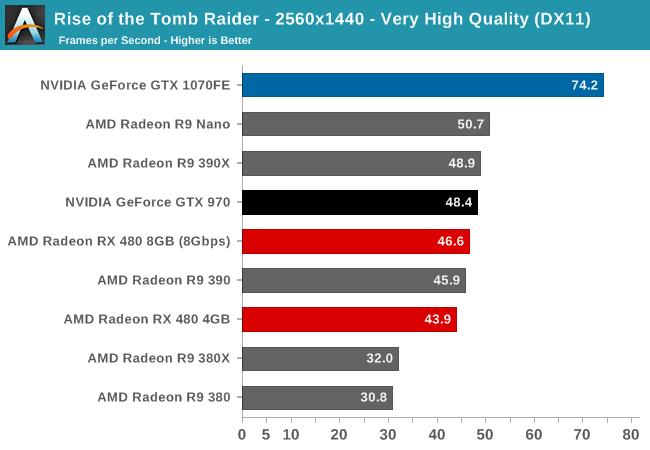
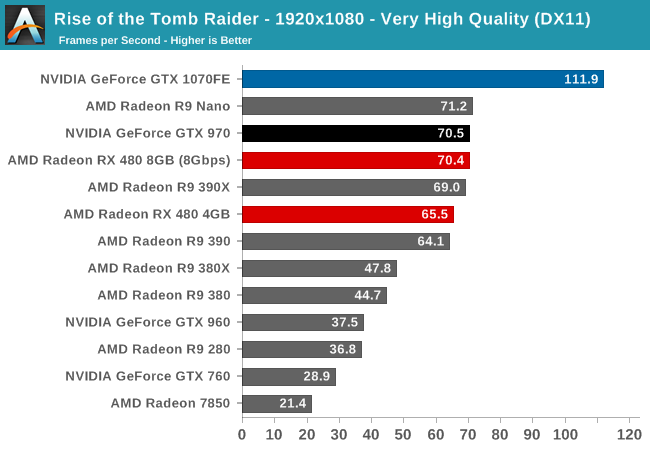

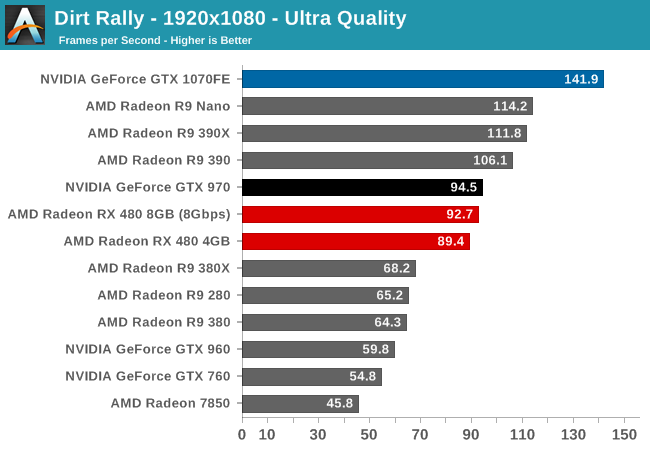
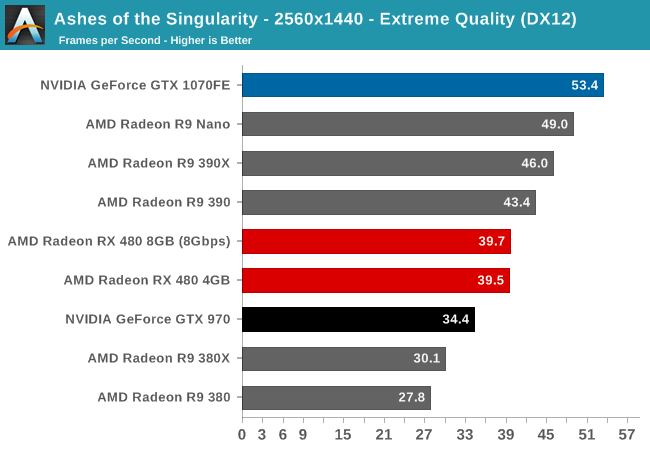
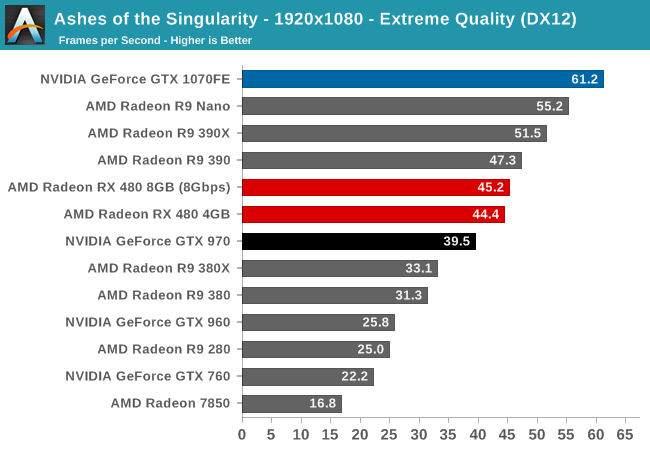
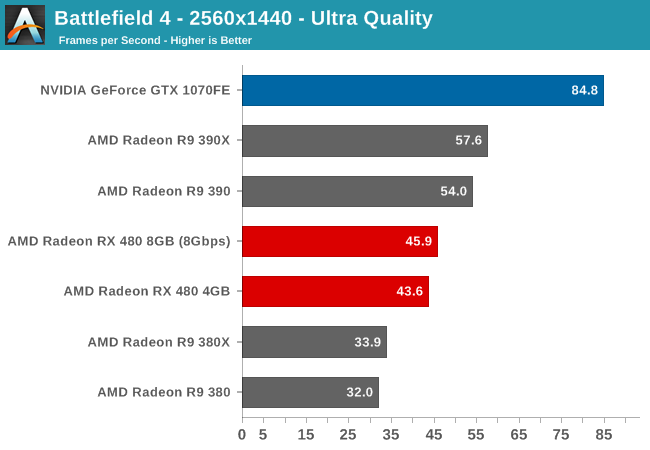
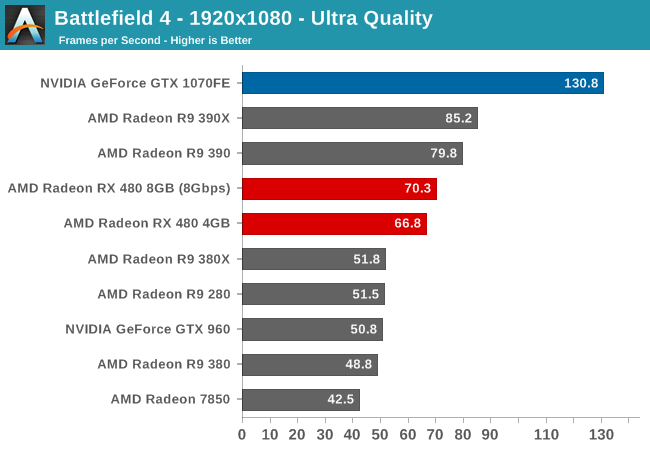

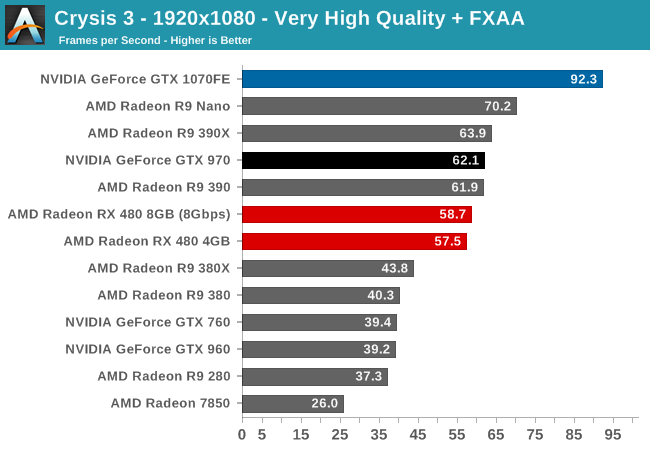
Overall, AMD is pitching the RX 480 as a card suitable for 1440p gaming as well as 1080p gaming and VR gaming. In the case of 1080p the card is clearly powerful enough, as even Crysis 3 at its highest quality setting is flirting with 60fps. However when it comes to 1440p, the RX 480 feels like it’s coming up a bit short; other than DiRT Rally, performance is a bit low for the 60fps PC gamer. Traditionally cards in the $199-$249 mainstream range have been 1080p gaming cards, and in the long run I think this is where RX 480 will settle at as well.










449 Comments
View All Comments
ffleader1 - Thursday, June 30, 2016 - link
Can you maybe redo the test with updated driver.It seems that newer driver really makes a HUGE difference.
https://www.reddit.com/r/Amd/comments/4qiffg/rx_48...
Ryan Smith - Friday, July 1, 2016 - link
This was done with the latest driver to begin with: 16.6.2. The press was not distributed any other driver AFAIK.Falko83 - Thursday, June 30, 2016 - link
I hope that in the review you can also address 1080p 144hz gaming.davide445 - Thursday, June 30, 2016 - link
"Relative to last-generation mainstream cards like the GTX 960 or the Radeon R9 380, with the Radeon RX 480 we’re looking at performance gains anywhere between 45% and 70%, depending on the card, the games, and the memory configuration. As the mainstream market was last refreshed less than 18 months ago, the RX 480 generally isn’t enough to justify an upgrade"This is something I didn't understand. 45-70% performance increase it's not enough for a card that request less power and cost less?
Also where is the problem with the fact the power consumption is above equivalent Nvidia? At 150w I doubt anyone upgrading need a new PSU. I suppose below a threshold power request it's not part of the game anymore, otherwise next request will be that a GPU will produce power and not need some....
dragonsqrrl - Thursday, June 30, 2016 - link
Ryan addressed some of this in response to an earlier comment:"Although it's not an objective metric, generally I'm looking for an average 65%+ performance increase to justify replacing a video card. Against 380 in particular, 480 doesn't quite reach that mark."
150W TDP wouldn't be a problem in a vacuum, but unfortunately AMD is competing against Nvidia, not just at the midrange, but the whole product stack including the high-end. That means AMD is going to have more trouble scaling performance this coming generation, not unlike the last. In modern microarchitectures performance and efficiency are basically the same thing because we've hit the TDP ceiling for these form factors. I think Ryan actually explained it quite elegantly:
"power efficiency and overall performance are two sides of the same coin. There are practical limits for how much power can be dissipated in different card form factors, so the greater the efficiency, the greater the performance at a specific form factor. This aspect is even more important in the notebook space, where GPUs are at the mercy of limited cooling and there is a hard ceiling on heat dissipation."
davide445 - Thursday, June 30, 2016 - link
Maybe I'm asking too much objectivity. Asking for +65% for performance increase is nothing without a specific reason. 960 vs 760 show a 6% increase in 3dmark performances.760 vs 660 show a 20% increase. 660 vs 560 show a 55% increase (data from GPU boss). So why a 40-70% (average 55%) is not enough? It's the same you can achieve with two generations of Nvidia equivalent.About TDP ok for competing, but what I'm saying is it's not more relevant. Ok when AMD GPU was 200-250w hungry and Nvidia equivalent was 100w less, but with 150w really make difference for anyone for maybe 50w? Also didn't understand about the whole stack competition, we need to compare same price level: 480 vs 380 or 390 or 960 or 970, 1070 is available on Newegg for $430 min, 1060 is not available at all.
dragonsqrrl - Thursday, June 30, 2016 - link
It sounds like you're under the impression he recommended upgrading from a 760 to a 960, he did not."Also didn't understand about the whole stack competition"
Then am I correct in assuming you don't understand the significance of TDP ceilings for a given form factor? If you have a less efficient architecture, you're going to have a less performant GPU once you approach that ceiling. It's not as concrete for desktop discrete GPUs as it is for notebooks, but there are still upper limits, which tend to be around 250-300W. AMD can always price competitively, but the last thing they need right now is a repeat of last gen. They need competitive 'products' in their lineup, and for AMD, in terms of financial and competitive viability, that means a lot more than just price/performance ratios. This has less to do with the RX480 right now and more to do with prospects for the rest of the generation.
Ananke - Thursday, June 30, 2016 - link
Let me simplify for you: The question is "What can I get for $200?". RX480, RX380, GT960, GT950.Very simple choice at the moment.
dragonsqrrl - Thursday, June 30, 2016 - link
@AnankeYes, yes it is. But if you read the last sentence in my previous comment, and the rest of my responses the the thread, you'd hopefully realize that's besides the point.
davide445 - Thursday, June 30, 2016 - link
I suppose depends what these reviews are expected for. IMHO (and of course this is my personal opinion) these need to be guides useful for informed purchase, similar to what you did expect from stock investment advice. So you need to be specific about your assumptions and audience.These cards are not for mobile, so mobile is not in the equation. We are discussing about a specific card, not a corporate or tech startegy. We are discussing about mostly gaming or DX performances, so the audience are using a PC and didn't consider enough integrated GPU. So need to decide mostly if upgrade, not to purchase the first one considering how PC market is going. So the decision this review need to address is what GPU on the market this people need to purchase, considering a target price and average PC specs.